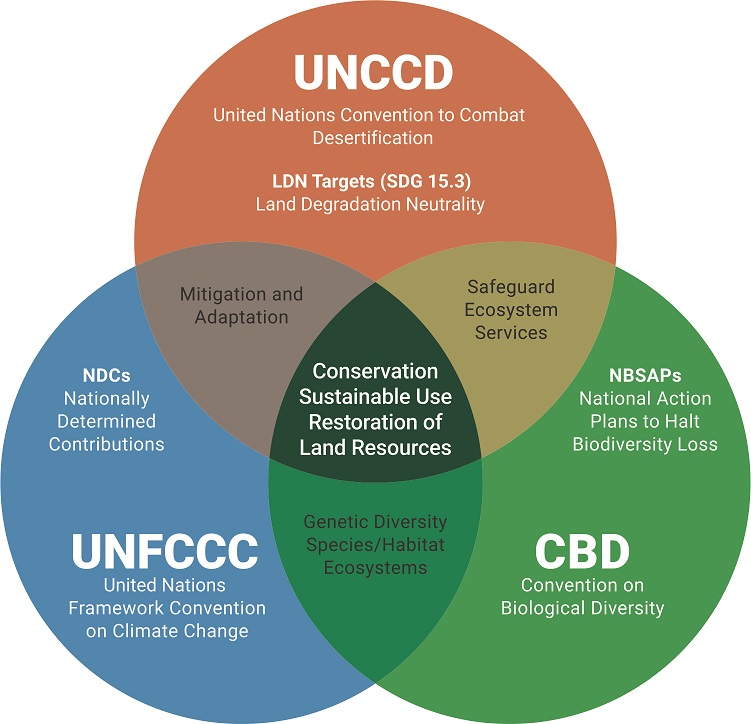The 15th Conference of Parties (COP15) of the United Nations Convention to Combat Desertification (UNCCD), held in Abidjan, Côte d’Ivoire, concluded with a joint commitment to boost drought resilience and invest in land restoration for future prosperity. After the two-week meeting on the future of land management, and an active participation of the ELD Initiative partners, there are a number of key messages to take away for ELD:
- Tackling land degradation and increasing resilience to drought through land and ecosystem restoration is the key to future-proof development. Economic analysis - showing the finance gap and providing return on investment (ROI) assessments and scenarios - is crucial in demonstrating that land restoration pays off economically. Given the quest for future resilient development, communicating the benefits of healthy restored land using this language can create solid narratives for all audiences.
- Translating commitments and ambitions to real action is the task at hand. Today, in the context of the transition to SLM, it is necessary to show the pathways to LDN and emphasize the economic opportunities that will arise. Effective incentive systems are undoubtedly important levers for increasing farming and other land-use practices that preserve healthy soils and enhance the provision of ecosystem services for climate-resilient landscapes. Nevertheless, this requires establishing long-term incentives and insurance systems that encourage land managers to transform their farming practices over time. Greater clarity on land tenure rights is also indispensable for large-scale land and soil rehabilitation investments.
- Synergies of Rio Conventions were at the center of the debate. Nature loss, land degradation, and climate change are closely interrelated; indeed, none of the crises can be successfully resolved unless they are thought about and addressed together. Considering that land is the common factor of the three Rio Conventions (UNFCCC, UNCCD, and UNCBD), the challenge today, in seeking to achieve the common goals, is to better capitalize on the potential synergies between the national target systems. This process implies revealing the costs and benefits of siloed versus harmonized implementation of national Rio targets.
- Redefining funding requirements is a game-changer. The Global Environment Facility (GEF) changed its funding requirements for future projects. The shift towards a narrative of policy coherence and overcoming conventional silos implies that proposals must now follow an integrated, multi-sectoral and landscape-based approach.
- Integrated land-use planning, an effective instrument for the transition toward LDN is at the center of discussions at COP 15. Rapid land-use changes are crucial to sustaining an intact environment that provides biodiversity, climate mitigation and adaptation, disaster risk reduction, and food security. An integrated, evidence-based land-use planning is an essential tool for LDN, as potential trade-offs and conflicts of interest are negotiated, and the complexity of land-use limiting factors is considered based on data and knowledge. Efforts to merge different data sources and make them accessible to land-use planners are significant. A range of tools for decision-making towards SLM and LDN is being developed to support informed and future-oriented land use planning.

